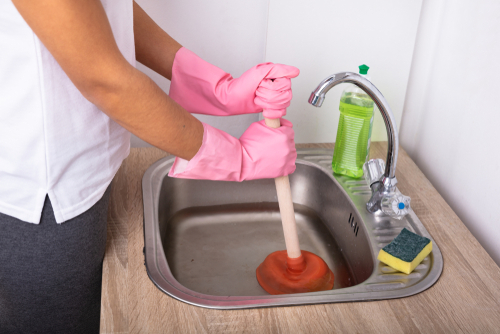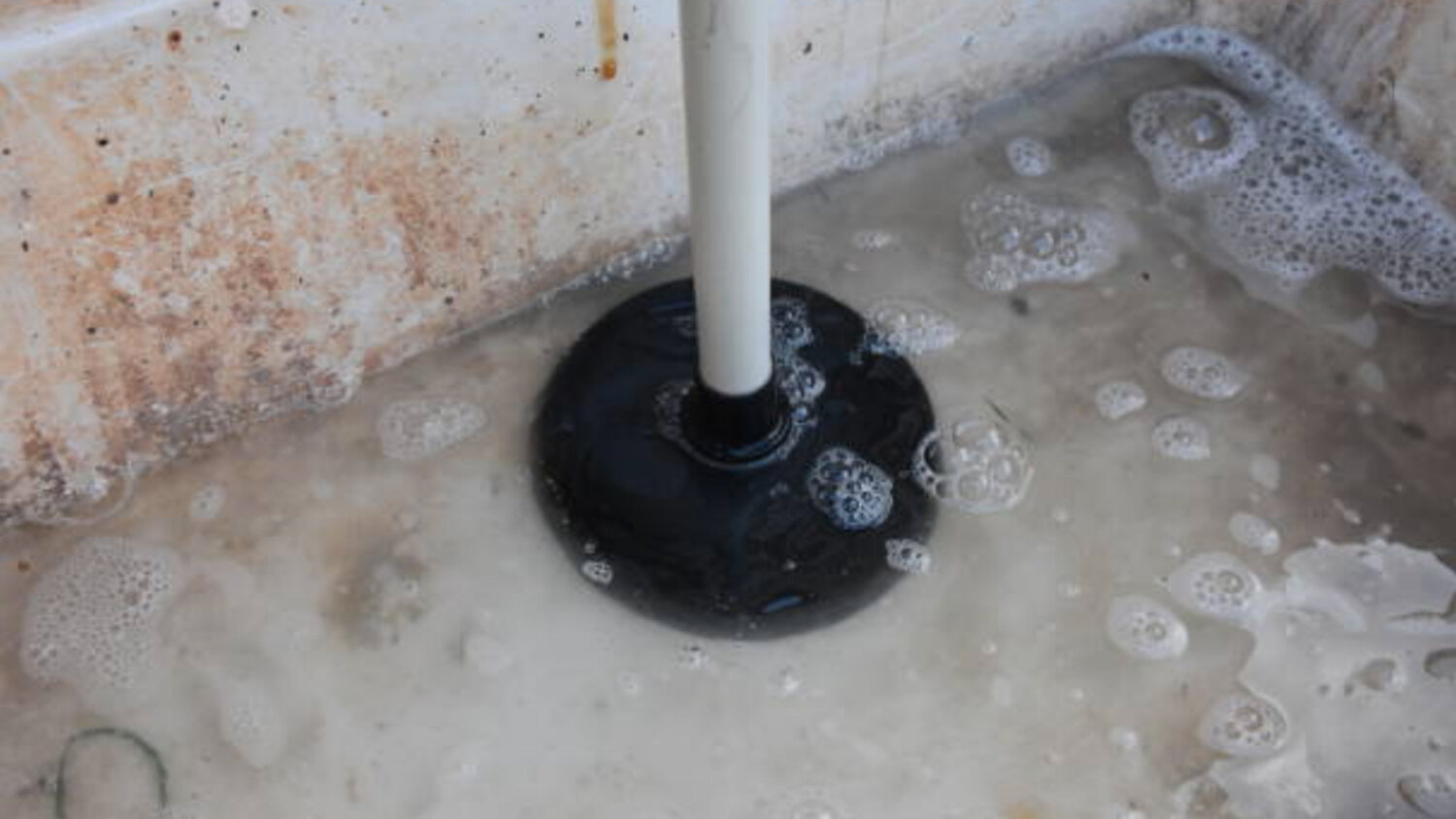Using Plungers and Drain Cleaner: Pro Advice
Using Plungers and Drain Cleaner: Pro Advice
Blog Article
Just how do you really feel when it comes to How to Unclog Your Sink with a Plunger?

Introduction
Appropriate maintenance of home drains is necessary for avoiding clogs and ensuring smooth water circulation. Among the secret devices in every house owner's toolkit is the plunger, alongside numerous drainpipe cleansers created to take on stubborn blockages properly. This short article explores just how to use bettors and drainpipe cleaners effectively to keep your drains moving easily.
Section 1: Comprehending Bettors
Sorts of Plungers
There are numerous types of bettors readily available, each designed for various types of drains and clogs. The most common types include mug bettors, flange plungers, and accordion plungers.
Just How Plungers Work
Bettors work on the concept of creating stress and suction to remove obstructions. When correctly used over a drain, they develop a vacuum cleaner that can pull out debris or separate blockages.
Selecting the Right Plunger
Choosing the ideal bettor depends upon the kind of drain and the nature of the clog. Mug bettors are ideal for sinks and bathtubs, while flange bettors are better matched for toilets due to their design.
Usual Blunders with Plungers
Preventing these blunders makes sure reliable plunging: incorrect seal around the drain, not enough force, and unclear bordering particles.
Area 2: Utilizing Plungers Efficiently
Prep work
Before diving, make certain the plunger covers the drainpipe totally and creates a tight seal. Clear any visible debris around the drainpipe opening.
Strategy
Beginning with gentle diving movements to develop suction. Boost stress gradually, making use of a stable rhythm. Repeat as needed till the drainpipe clears.
Troubleshooting Tips
If plunging doesn't function, try readjusting the seal, using oil jelly for a better seal, or utilizing a different type of bettor.
Area 3: Understanding Drain Cleaning Company
Sorts Of Drainpipe Cleansers
Drain pipes cleansers can be chemical or chemical. Chemical cleaners make use of strong chemicals to liquify clogs, while chemical cleaners utilize natural enzymes to break down raw material.
How Drainpipe Cleansers Job
Chemical cleansers respond with blockages to liquify them, while enzymatic cleaners break down organic materials like hair and grease without damaging pipelines.
Security Factors to consider
Constantly put on handwear covers and eye protection when utilizing chemical drainpipe cleansers. Make sure sufficient ventilation and adhere to maker instructions thoroughly.
Eco-Friendly Alternatives
Take into consideration utilizing vinegar and baking soda or enzyme-based cleaners for green options that are more secure for pipes and the atmosphere.
Area 4: Making Use Of Drainpipe Cleansers Successfully
Application Methods
Pour chemical cleaners straight right into the drain opening. Enable them to help the recommended time before flushing with hot water. Chemical cleansers need to rest overnight.
Precautions
Stay clear of blending different kinds of cleaners, as this can create hazardous fumes. Never ever utilize chemical cleansers combined with a bettor, as splashing can happen.
Managing Stubborn Blockages
For consistent blockages, think about using a pipes serpent or calling a professional plumber to stop damage to pipes.
Conclusion
Finally, comprehending just how to utilize bettors and drain cleansers efficiently is essential for keeping healthy and balanced plumbing systems. By selecting the right devices and methods, house owners can deal with small clogs and stop significant plumbing issues down the line.
How To Properly Use A Plumbing Snake To Clear Drains
When any drain clogs in our home arise, we tend to gravitate toward the plunger and little else. In cases where the plunger and its vacuum-created pressure are not able to clear clogs, many immediately move to harmful chemicals or simply call their plumber to fix the issue.
we’re happy to help with all drain cleaning needs and concerns. This includes informing you on a few other home remedies you may have at your disposal for minor to moderate clogs, one of which is the use of a plumbing snake. Many people have never used one of these before – let’s go over the steps to take when your drain clogs and you have a plumbing snake available.
Attempt Plunger Use
The first step here, as we noted above, should indeed be to grab your plunger when you notice a drain clog and attempt to resolve it this way. If you’re unsure how to use a particular type of plunger, our plumbers can answer any questions you have. If this doesn’t do the trick, however, you move on to the snake.
Locate And Prepare Snake
A plumbing snake is a metal or plastic device that’s generally about a quarter of an inch thick. It’s design with significant extensions, meant to reach down into your clogged drain and push the clog out. Snakes also contain drain augers that will latch onto and push stubborn blockages.
If your plunger doesn’t clear a clog, locate your snake and bring it to the drain in question. We also recommend keeping a bucket nearby to collect the clog once you pull it out, plus we’d advise wearing goggles and possibly protective gloves.
Feed Snake
Once you’re ready to go, feed the snake slowly down the drain, using the crank device it comes with to keep it moving until it finds the clog. Once this happens, much of the clog will be latched onto the coil so you can pull it out, while the rest will simply break up and flow downward.
Detach Debris
Remove the snake slowly from the drain, and once you’ve done so, pick off any debris that’s stuck to the coil. This is another area where wearing gloves is a must.
Flush Drain
Finally, take a few minutes to ensure the snake has done its job correctly. If you’ve been using it on a toilet, flush the toilet a couple times and make sure everything flows well. If you’ve used it on a different drain, flush it with some room temperature water.
https://www.mybuddytheplumber.com/blog/how-to-properly-use-a-plumbing-snake-to-clear-drains/

Application Methods
Pour chemical cleaners straight right into the drain opening. Enable them to help the recommended time before flushing with hot water. Chemical cleansers need to rest overnight.
Precautions
Stay clear of blending different kinds of cleaners, as this can create hazardous fumes. Never ever utilize chemical cleansers combined with a bettor, as splashing can happen.
Managing Stubborn Blockages
For consistent blockages, think about using a pipes serpent or calling a professional plumber to stop damage to pipes.
Conclusion
Finally, comprehending just how to utilize bettors and drain cleansers efficiently is essential for keeping healthy and balanced plumbing systems. By selecting the right devices and methods, house owners can deal with small clogs and stop significant plumbing issues down the line.
How To Properly Use A Plumbing Snake To Clear Drains
When any drain clogs in our home arise, we tend to gravitate toward the plunger and little else. In cases where the plunger and its vacuum-created pressure are not able to clear clogs, many immediately move to harmful chemicals or simply call their plumber to fix the issue.
we’re happy to help with all drain cleaning needs and concerns. This includes informing you on a few other home remedies you may have at your disposal for minor to moderate clogs, one of which is the use of a plumbing snake. Many people have never used one of these before – let’s go over the steps to take when your drain clogs and you have a plumbing snake available.
Attempt Plunger Use
The first step here, as we noted above, should indeed be to grab your plunger when you notice a drain clog and attempt to resolve it this way. If you’re unsure how to use a particular type of plunger, our plumbers can answer any questions you have. If this doesn’t do the trick, however, you move on to the snake.
Locate And Prepare Snake
A plumbing snake is a metal or plastic device that’s generally about a quarter of an inch thick. It’s design with significant extensions, meant to reach down into your clogged drain and push the clog out. Snakes also contain drain augers that will latch onto and push stubborn blockages.
If your plunger doesn’t clear a clog, locate your snake and bring it to the drain in question. We also recommend keeping a bucket nearby to collect the clog once you pull it out, plus we’d advise wearing goggles and possibly protective gloves.
Feed Snake
Once you’re ready to go, feed the snake slowly down the drain, using the crank device it comes with to keep it moving until it finds the clog. Once this happens, much of the clog will be latched onto the coil so you can pull it out, while the rest will simply break up and flow downward.
Detach Debris
Remove the snake slowly from the drain, and once you’ve done so, pick off any debris that’s stuck to the coil. This is another area where wearing gloves is a must.
Flush Drain
Finally, take a few minutes to ensure the snake has done its job correctly. If you’ve been using it on a toilet, flush the toilet a couple times and make sure everything flows well. If you’ve used it on a different drain, flush it with some room temperature water.
https://www.mybuddytheplumber.com/blog/how-to-properly-use-a-plumbing-snake-to-clear-drains/

I came across that post on How To Use Your Toilet Plunger Correctly in 5 Easy Steps while doing a search on the search engines. Liked our post? Please quickly share it. Help someone else locate it. Many thanks for being here. Don't hesitate to stop by our blog back soon.
Call Today Report this page